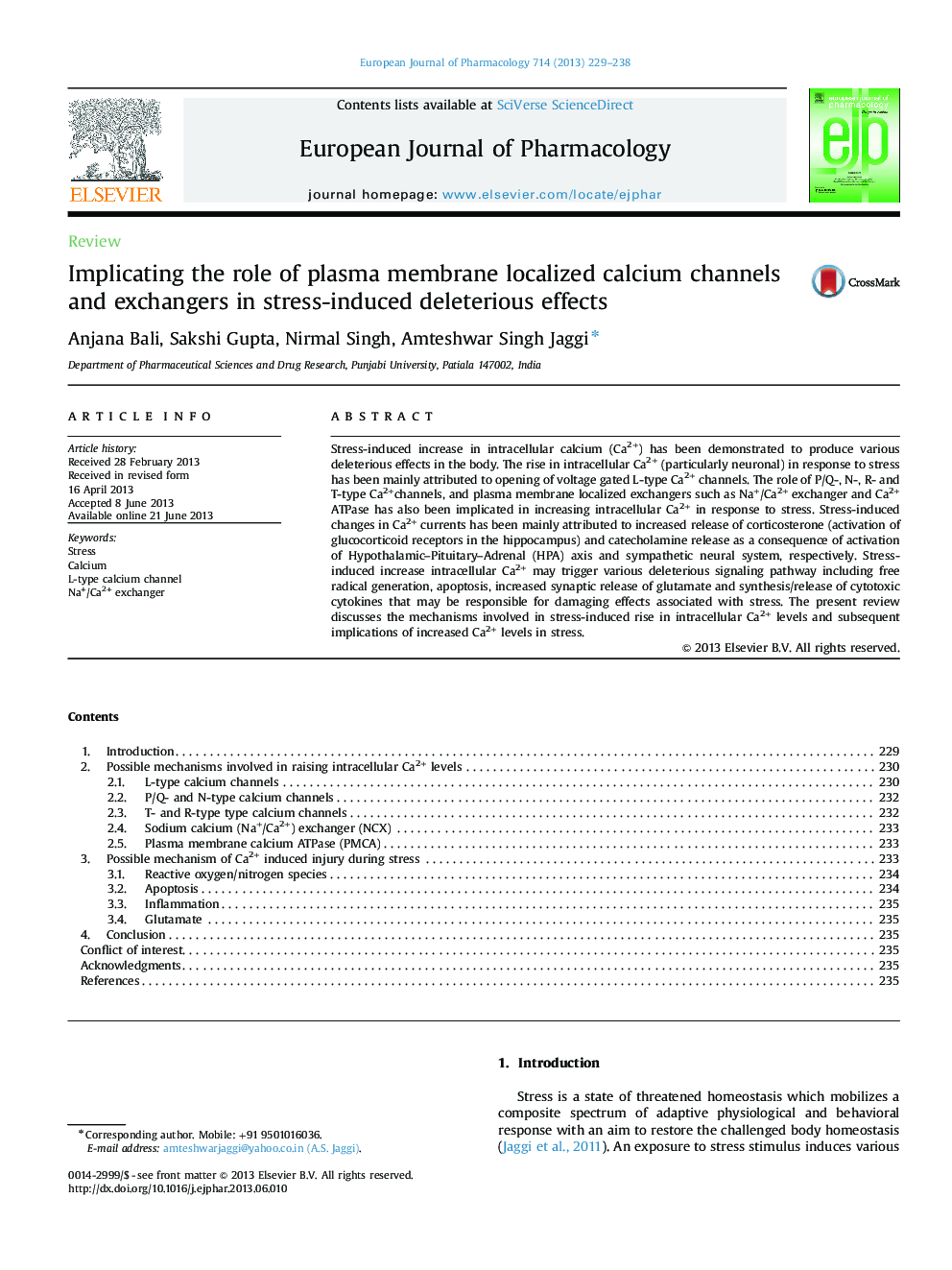| Article ID | Journal | Published Year | Pages | File Type |
|---|---|---|---|---|
| 5828520 | European Journal of Pharmacology | 2013 | 10 Pages |
Stress-induced increase in intracellular calcium (Ca2+) has been demonstrated to produce various deleterious effects in the body. The rise in intracellular Ca2+ (particularly neuronal) in response to stress has been mainly attributed to opening of voltage gated L-type Ca2+ channels. The role of P/Q-, N-, R- and T-type Ca2+channels, and plasma membrane localized exchangers such as Na+/Ca2+ exchanger and Ca2+ ATPase has also been implicated in increasing intracellular Ca2+ in response to stress. Stress-induced changes in Ca2+ currents has been mainly attributed to increased release of corticosterone (activation of glucocorticoid receptors in the hippocampus) and catecholamine release as a consequence of activation of Hypothalamic-Pituitary-Adrenal (HPA) axis and sympathetic neural system, respectively. Stress-induced increase intracellular Ca2+ may trigger various deleterious signaling pathway including free radical generation, apoptosis, increased synaptic release of glutamate and synthesis/release of cytotoxic cytokines that may be responsible for damaging effects associated with stress. The present review discusses the mechanisms involved in stress-induced rise in intracellular Ca2+ levels and subsequent implications of increased Ca2+ levels in stress.
